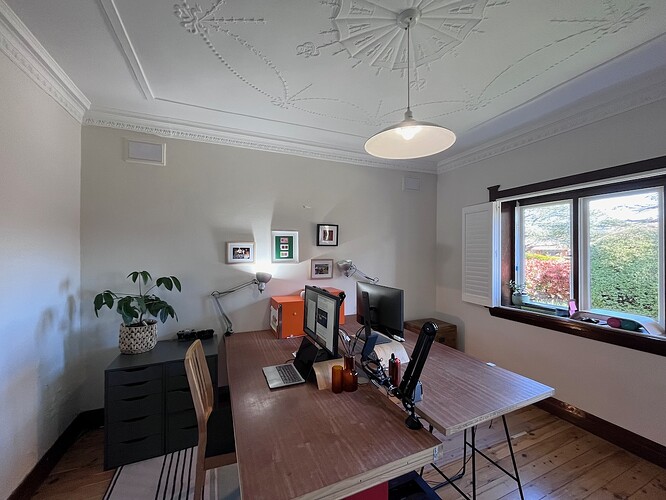Thank you very much, this is exactly what I needed. I love how the JD system can be customized enough to accommodate varying use cases, yet is rigid enough to provide the much needed structure we’re all after.
It’s a great video, if you’ve never done this before: you’re really good at presenting in front of a camera. I’m looking forward to seeing more of these videos 
At the moment I’m hard at work to set up a JD system for myself and my businesses, so being knee-deep in this myself I have a few critical remarks which could be valuable:
Structure: before and after the decimal
In your video you state how the first part of the JD number is all about structure, where the second part is not supposed to carry any meaning.
I feel like this is not really the case in your modified structure, as modelling the ID-level folder structure after a template structure implicitly indicates there is definitely some structure there. I’ll immediately add that I don’t really mind though, as it definitely brings the organization we’re all after, which is exactly the end goal of JD.
Folders within folders
At a certain point you mentioned your stance on nested folders on the ID-level is softening a bit. I really agree with this. When designing my own system I feel like getting rid of any substructures and flattening everything out to the ID-level makes things harder to find in certain situations. Even at a deeper level there might still be some hierarchical structure that you don’t just want to throw out just to adhere to the original JD design.
A simple example in a different business (not freelancing) I’m involved with: we’ve got a whole array of products, all belonging to different product categories, so my current structure looks like this:
70-79 Customers and sales
[...]
- 72 Products and services
- 72.01 Product group 1
- Actual product A
- Actual product B
- 72.02 Product group 2
- Actual product C
- Actual product D
- Actual product E
- ...
[...]
Another example from the same structure:
30-39 Technical
- 30 IT
- 30.01 Hardware
- 30.02 Software
- Application 1
- Application 2
- Application 3
- 31 Infrastructure and machinery
[...]
If having any subfolders would be ‘prohibited’, we would have to redesign the entire JD structure to accommodate for the extra dimension, even though it works great for practically everything else in this company.
I feel like the actual goal should be (which you do emphasize in your video) to not have ANY files at all in the structured part (areas and categories) of your JD system.
Doing otherwise would ruin the entire structure, as it removes all barriers to just drop a file somewhere without taking a little time to reflect where it actually belongs.
Conclusion
At a certain point you’re organized well enough and it doesn’t make sense to optimize further. I feel like this point is reached at the ID level. From my point of view the area and category really need to be structured well and thought about deeply, the ID is a bit more flexible and might or might not carry meaning, and everything after that is just over-optimization.
What do you think?
I’m sorry for the long post. It’s not entirely related to the freelancer system, but I thought it would be useful to share my feedback. Don’t hesitate to point out where you agree or disagree, I feel like I could learn a lot from this.



